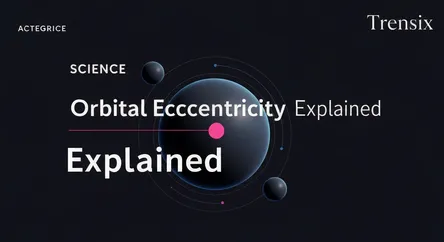Science
Orbital Eccentricity Explained

Discover orbital eccentricity, the key measure defining the shape of a planet's path from a perfect circle to an extreme ellipse. Learn why it matters.
What is it?
Orbital eccentricity is a fundamental parameter in astronomy that measures how much an object's orbit around another body deviates from a perfect circle. Represented by a number 'e', a value of 0 is a perfect circle, while a value between 0 and 1 is an elliptical orbit. For example, Earth's orbit is nearly circular (e ≈ 0.0167), whereas Halley's Comet has a highly eccentric, elongated path (e ≈ 0.967). An eccentricity of exactly 1 describes a parabolic escape trajectory, and greater than 1 is a hyperbolic path, meaning the object will never return.
Why is it trending?
Interest in eccentricity is surging with the discovery of thousands of exoplanets. Many of these distant worlds have highly eccentric orbits, challenging our classic models of how planetary systems form. Advanced telescopes like the James Webb Space Telescope are providing unprecedented data on these extreme systems. Furthermore, eccentricity is crucial for tracking near-Earth asteroids and understanding long-term climate patterns on Earth, known as Milankovitch cycles, which are influenced by subtle shifts in our planet's orbit.
How does it affect people?
While Earth's slight eccentricity has a minor impact on our seasons, the concept is vital for technology and safety. It is the foundation of celestial mechanics, enabling us to launch satellites and plan fuel-efficient trajectories for interplanetary missions. Critically, calculating the eccentricity of asteroids and comets is essential for planetary defense. By accurately modeling their elliptical paths, scientists can predict if they pose an impact risk to Earth, giving us time to prepare or potentially intervene. This makes understanding orbital shapes crucial for our future in space and our safety at home.